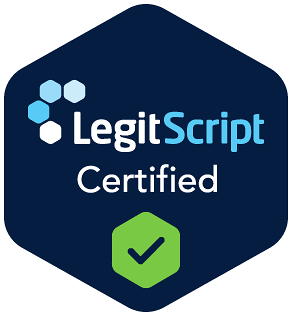If you are a working professional, you want recovery that protects your job, your privacy, and your name. This guide shows you how to move through an addiction recovery journey while keeping work and family on track. You will learn what laws say about confidentiality and leave, how to speak with HR, and how to ask for simple, reasonable changes at work. You will also see how case-by-case treatment plans, case management, and supports like mindfulness fit into a busy schedule. We use clear rules from ADA, FMLA, HIPAA, and 42 CFR Part 2, plus up-to-date clinical standards like the ASAM Criteria. The steps are simple. You will plan one day at a time. You will practice skills that lower stress. You will build a circle that keeps your private life private. Ready to map your next step with calm and confidence? Keep reading for scripts, checklists, and trusted sources you can open today.
Who this is for
You are an adult professional in New Jersey. You want care that fits real life. You want privacy. You want options that work with work, school, and family. You want a plan that treats substance use and mental health together. You want a kind team and a clear path. This guide is for you.
You may fear stigma. You may fear job loss. You may fear someone finding out. You are not alone. There are simple ways to protect your information, to use the benefits the right way, and to move forward with support.
1) What the law actually covers: ADA, FMLA, HIPAA, and 42 CFR Part 2

Many working adults worry that asking for help will cost them their job. The truth is more balanced. The Americans with Disabilities Act (ADA) can protect people in recovery from discrimination. But it does not protect current illegal drug use. Alcohol use disorder can be covered if you can do your job with or without a reasonable accommodation. These rules matter for HR talks and for job safety. Read the source before you act. See the EEOC’s employer and employee pages for plain language.
The Family and Medical Leave Act (FMLA) may allow up to 12 weeks of job-protected leave for treatment with a licensed provider or by referral. Time off for using a substance is not covered. Your HR team will ask for medical certification when needed. You can read the rule in federal sources.
Key points to remember
- ADA may protect people in recovery; it does not protect current illegal drug use.
- FMLA can cover treatment time, not use.
- Keep your paperwork accurate and straightforward.
- Save copies of everything you submit.
2) What your employer can and cannot know: HIPAA and 42 CFR Part 2
HIPAA is a health privacy law for covered entities like health plans and health care providers. It limits what they can share with an employer. It does not stop an employer from asking you for information. Still, your health plan or provider cannot give your private data to the employer unless rules are met. Read the HHS pages on HIPAA in the workplace to see how this works.
42 CFR Part 2 is a special privacy rule for substance use disorder (SUD) treatment records. It sets stricter limits than HIPAA for programs that fall under Part 2. In short, your SUD treatment records are tightly protected. Sharing often needs your written consent, and records cannot be used to investigate or prosecute you without consent or a qualifying court order.
What this means for you
- Your doctor or SUD program cannot hand your records to your boss without proper consent.
- If your company offers an EAP through a health plan, HIPAA often applies to the EAP. Ask the EAP for its Notice of Privacy Practices and how it protects your data.
- Part 2 adds even more protection for SUD records held by Part 2 programs.
3) How to talk with HR with confidence
You do not need to tell everyone at work. In many cases, you only speak with HR and maybe your direct supervisor. Keep the focus on job tasks and the support you need to keep doing them well. You can ask for a reasonable accommodation if you are covered under the ADA. Examples include a short-term schedule shift, time for appointments, or a quiet space for a telehealth session on a break. The EEOC explains that employees can request accommodation at many points, even after performance concerns are raised.
Keep documentation simple. Provide only what is needed to show eligibility for leave or accommodation. Use your provider to complete medical forms. Avoid sharing treatment details with your manager. Ask HR where to send forms so they are stored in a confidential medical file, not your personnel file. HHS explains that group health plans have strict limits on sharing identifiable health data with the employer.
Conversation tips
- Lead with your job tasks and what you need to keep doing them.
- Ask HR to confirm how your medical data will be stored and who can view it.
- If you qualify, ask for FMLA leave for treatment.
- If you are in recovery, you may request reasonable accommodation as needed.
4) Your plan should be case-by-case: how the ASAM Criteria guides the level of care
Good care is not one-size-fits-all. The ASAM Criteria help providers match a person to the appropriate level of care and update the plan as life circumstances change. This is how teams build case-by-case treatment plans that fit your work and family. It can mean intensive outpatient, regular outpatient, or a mix with telehealth, depending on need and safety. Read more about the ASAM Criteria and how they support person-centered plans.
A case-by-case plan looks at six areas, such as risk of withdrawal, medical needs, mental health, readiness to change, relapse risk, and recovery supports. Your plan should include goals you helped set, not goals set for you. This approach helps busy professionals stay engaged and lowers the chance of gaps in care. It also aids in HR planning, as visits and milestones are predictable.
What to ask your provider
- Which ASAM level fits me today, and why?
- How often will we review and adjust the plan?
- Can my plan include evening groups or telehealth check-ins?
- How will you coordinate with my prescriber and therapist?
5) Why case management matters for working adults
Case management means a professional helps you connect the dots. They help with scheduling, benefits, insurance, and referrals. They also help you follow the plan and adjust it when your life changes. Reviews show that case management improves linkage to care and can help stabilize complex needs. Some research finds mixed results on reducing use itself. However, it still improves access and coordination, which matters for people with busy jobs and families.
When care is coordinated, your therapist, prescriber, and primary care provider share needed updates. That means fewer repeated forms and fewer mixed messages. Ask your team to align on a single goal list and a corresponding medication list that you keep updated on your phone.
Ask your program
- Do you provide a named case manager?
- How do you coordinate with my primary care and psychiatrist?
- Do you help with insurance and paperwork?
- How do you share updates with me so I can stay informed and in control?
6) Privacy in practice: EAPs, drug testing, and your records
If your company offers an Employee Assistance Program (EAP) through a health plan, it is often covered by HIPAA. That means your private data is protected by law. Confirm how reports are anonymized and what, if anything, HR receives. Review the EAP’s Notice of Privacy Practices and ask how consent works. HHS explains the basics of workplace privacy and restrictions on sharing PHI from plans to employers.
For SUD treatment records themselves, remember 42 CFR Part 2. Your written consent is usually needed to share those records, and the rules restrict redisclosure. That is a strong shield for professionals who value privacy. Read the updated 2024 HHS fact sheet and SAMHSA FAQ.
What to check at work
- Whether EAP is part of the group health plan.
- Who sees the identifying information and when?
- How drug testing is handled and where results are stored.
- Where to send any medical forms so they can be kept in a confidential medical file.
7) Reasonable accommodations that help professionals stay on track
The ADA allows reasonable accommodations that do not cause undue hardship. For addiction recovery, common examples include minor schedule changes, brief time off for therapy, or permission to attend a support group on a lunch break. The EEOC notes that an employee may request accommodation even after performance issues are raised. Clear documentation and a focus on essential job functions help both sides.
Safety still matters. Employers can require that employees not be under the influence at work and can enforce performance rules that are job-related. When you seek help and follow treatment, you and your employer share a goal: safe, steady work. Use HR as a partner in planning time-limited steps that keep your work strong while you heal. The law text on FMLA treatment leave is also useful in showing that the needed time is for treatment, not for use.
Accommodation ideas to discuss
- One late start per week for a morning therapy visit.
- A predictable break time for a telehealth check-in.
- Short blocks of intermittent FMLA for treatment.
- Temporary shift swap during an intensive group cycle.
8) Clinical supports that fit a busy schedule: CBT skills, mindfulness
Daily skills help you handle stress on the job. Cognitive Behavioral Therapy helps you see thoughts, test them, and choose a helpful action. Many programs teach these skills in brief, focused sessions you can fit around work.
Mindfulness can add a nonverbal way to process stress and trauma. Reviews and new studies suggest that it may engage brain networks associated with emotion and reward. It may be a good fit for professionals who carry high stress or who need a quiet, private outlet. Ask your team if short, structured mindfulness sessions are available in the evening or via telehealth.
Try this at home
- Keep a small sketch pad for 10 minutes after work.
- Use color to track mood.
- Share themes with your therapist if you want, or keep them private.
9) Build your weekly rhythm: one plan that protects your time and focus
A simple rhythm beats a complex plan. Start with one day at a time. Schedule sleep, meals, movement, and support. Add two small recovery actions to each weekday. This routine conserves decision-making energy and reduces risk in high-stress jobs.
Use HALT checks. Ask if you are hungry, angry, lonely, or tired before you make a big choice. This keeps your brain online in hard moments. Federal recovery pages describe how health, home, purpose, and community support long-term change.
Weekly checklist
- Two therapy or group blocks.
- One skill practice you track daily.
- One nature break to reset.
- A short review with your case manager.
- One family or support touchpoint you schedule in advance.
10) How case-by-case treatment plans look for professionals
Your plan should match your risks, your strengths, and your goals at work and at home. With ASAM Criteria, your team can adjust the level of care up or down. If your week is heavy, you might use evening IOP days. If your risk is lower, a focused outpatient track may be enough. Ask for a written schedule you can share with HR to plan coverage. (https://www.asam.org/asam-criteria) Default
Review the plan every few weeks. Look at sleep, mood, cravings, and work stress. Update goals with your therapist and case manager. Keep one page with your meds list, supports, and crisis steps. Share only what is needed with HR. Keep your health records with providers, not your employer.
Ask at intake
- How will you tailor my plan to my job?
- What evening or telehealth options exist?
- How will you measure progress that I can see?
- How will you protect my privacy under HIPAA?
11) Scripts for honest conversations
Script for HR, minimal disclosure
“I am seeking medical treatment that helps me do my job well. I am requesting a reasonable accommodation and, if eligible, FMLA leave for treatment. My provider will complete any needed forms. Please let me know where to send them so they remain confidential.”
Script for supervisor
“I am working with HR on a short-term schedule adjustment to keep my performance strong. I will keep you updated on coverage for meetings and handoffs.”
Script for your provider
“I am a full-time professional. I need a plan that protects my privacy, allows evening or telehealth visits, and provides a simple summary for HR without including treatment details. Please complete all employer forms for me.”
13) Know the boundaries: current illegal drug use and job rules
You should know this bright line. The ADA does not protect current illegal drug use at work. Employers may test and enforce safety rules. If you are in recovery, engage with HR and your healthcare provider to ensure your plan is clear and you stay within established policies. Read the EEOC’s language on conduct, testing, and coverage.
FMLA can still help when you are seeking treatment with a provider. Ask HR early so you can plan coverage for your team. Keep treatment records with your provider and health plan.
Action steps
- If you need help, contact your doctor, EAP, or a trusted program now.
- Ask HR for FMLA forms for treatment if you think you qualify.
- Keep your requests focused on job tasks and safety.
14) Common questions professionals ask
Do I have to tell my boss I am in addiction treatment?
No. You only share what is needed to request leave or an accommodation. Your provider can complete forms. HIPAA limits what a plan or provider can share with your employer, and 42 CFR Part 2 adds extra protection for SUD records.
Can I use FMLA for outpatient visits?
FMLA can be taken intermittently for treatment by a health care provider or by referral. Work with HR to plan the schedule.
What if my job is safety sensitive
Employers can enforce safety rules and fitness for duty. You can still ask for a plan that helps you do the essential tasks safely. Use HR as a partner and keep your provider in the loop. See EEOC guidance on performance and accommodation.
15) One-page action plan for your next week
Use this to start now.
- Call your provider or EAP. Ask about evening or telehealth.
- Ask HR where to send medical forms so they stay confidential.
- Request intermittent FMLA for treatment if you qualify.
- Set two 30-minute blocks for therapy or group.
- Ask for a named case management contact.
- Write a simple script for HR and your supervisor.
- Review the ASAM-guided plan with your team in two weeks.
- Keep all health records with providers, not your employer.
- Protect sleep, meals, and one nature break each day.
Next step
If you live near New Jersey and want an outpatient path that protects privacy, fits your schedule, and treats mental health and substance use together, you can talk with a counselor and verify coverage now. Call Today, Verify Your Insurance, or Contact Us at BlueCrest Counseling to build a safe, case-by-case plan that supports your work, your health, and your future.




